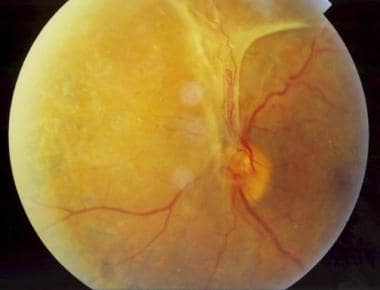

The underlying cause of the detachment will ultimately determine the overall success of treatment. During the PPV, scar tissue is meticulously removed with microforceps to allow the retina to reattach. Most often Pars Plana Vitrectomy (PPV) procedure is used to repair the detachment and sometimes a scleral buckle will be used in conjunction with the PPV. If the detachment involves the macula, the traction retinal detachment will need to be operated on. Close monitoring will be necessary to ensure it is not threatening the macula.

If the traction retinal detachment only involves the peripheral retina, surgery may not be necessary immediately. This occurs about five to ten percent of the time.

PVR is the most common reason why a rhegmatogenous retinal detachment repair fails. There are several conditions that can cause this type of detachment, including proliferative diabetic retinopathy and proliferative vitreoretinopathy (PVR). Both the workup and the treatment may have to occur in coordination with an internist or other specialist.Ī traction retinal detachment occurs when scar tissue within the vitreous cavity pulls on the retina eventually causing it to detach. Often times, blood work and other imaging studies or biopsies may be necessary to determine the underlying cause. Several conditions ranging from inflammatory diseases and tumors to connective tissue diseases and macular degenerative conditions can cause this type of fluid leak.Ī thorough ophthalmic examination, including an ultrasonography and angiography, as well as optical coherence tomography will be performed to ensure an accurate diagnosis and treatment plan. In order to properly treat an exudative retinal detachment, it is first important to understand its cause. We will work with each patient individually to determine the best treatment option for each specific case.Įxudative retinal detachment occurs due to a leak under the retina allowing beneath the retina. If for some reason the retina does not attach after one procedure, another procedure is performed to repair the detachment. If the macula is already detached, complete visual recovery is less likely.Ībout 90 percent of rhegmatogenous detachments can be repaired initially with one of the surgical procedures listed below. With early surgical repair, central vision can usually be preserved if the macula has not detached. The patient may notice this as a “veil” or “curtain” that is obscuring the peripheral vision and slowly encroaches on the center. As the detachment extends into the macula, central vision will eventually be lost. The vast majority of rhegmatogenous retinal detachments begin first in the peripheral retina, which will affect the side vision. If a retinal break does occur, a retinal detachment is likely. Symptoms include flashes and floaters that appear as curly lines and dark spots that move with your eye. It occurs when fluid from the liquefied vitreous (jello-like substance that fills the eye) passes through a retinal break or tear and accumulates under the retina, separating it from the eye wall. Rhegmatogenous retinal detachment is the most common type of detachment. There are three different categories of retinal detachment: If left uncorrected with the macula detached, central vision will be lost. When the retina separates from the back wall of the eye, it is detached from its nutrition source. If a detachment occurs, it is most often too late to use laser or cryoprobe to correct the problem and surgery will be necessary. Both treatment options are very successful in helping to prevent a retinal detachment. Another treatment option is the cryoprobe, which produces a scar around the break by freezing it. Most often, a laser will be used to treat a retinal break and prevent liquefied vitreous from passing through the retinal break. Early detection is key to preventing retinal detachment.


 0 kommentar(er)
0 kommentar(er)
